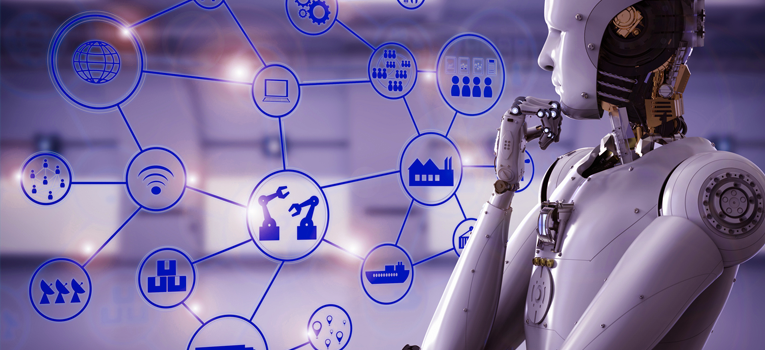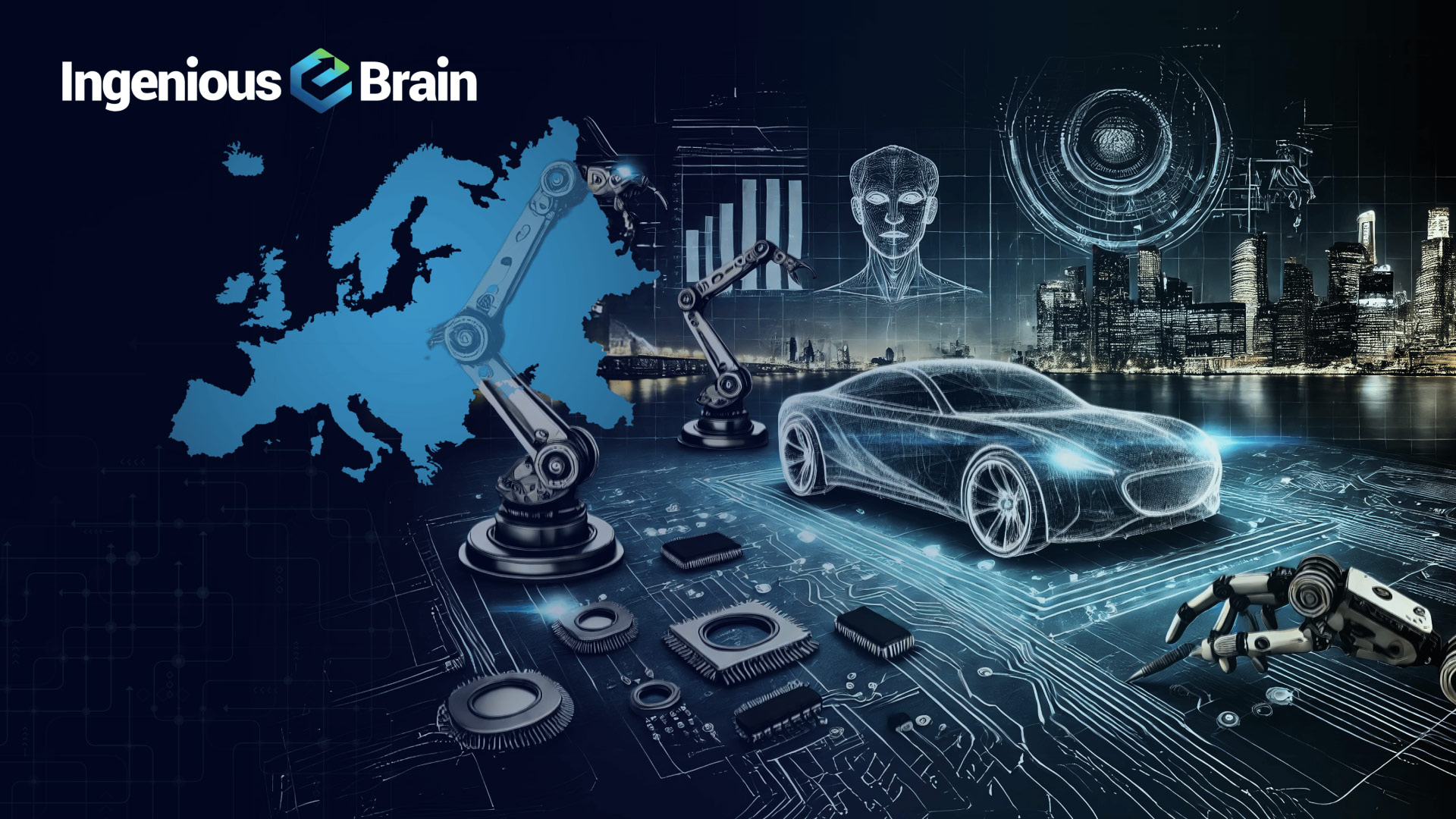Industry 5.0 is for people working alongside robots and other innovative pieces of machinery. It’s about the automation of operations using robots, helping humans work faster and better by leveraging advanced technologies like big data, the Internet of Things (IoT), etc. Industry adds a personal human touch to the Industry 4.0 pillars of automation and efficiency.
In the manufacturing sector, robots perform dangerous, monotonous, or physically challenging tasks, such as welding, loading, and unloading heavy materials in warehouses. As machines in the workplace get more efficient and more connected, Industry 5.0 aims to combine cognitive capabilities with human intelligence to optimize joint operations resourcefulness.
Industrial robots have been in use traditionally but were operated separately from workers and always behind safety cages. The robots were first deployed with human workers in 2008 at Linatex, a technical plastics and rubber supplier for industrial applications.
This collaboration of humans and machines opens the door for countless opportunities in the manufacturing sector. And since Industry 5.0 operations are still in relative infancy, manufacturers are actively strategizing methods to strengthen this collaboration and maximize the benefits reaped with this automation movement evolving continuously with time.
Industry 4.0 VS. Industry 5.0
Industry 4.0 brought together robots, fast data networks, and interconnected devices into the factory environment. This transition made the overall manufacturing sector more productive and executed the routine tasks using robots that humans did not best do.
Shifting the focus of companies from Industry 4.0 to Industry 5.0 allows customers to customize everything they want. The Industry 4.0 factory ensures a massive increase in safety, quality, and waste reduction. With Industry 4.0, users could already design their products online, and the manufacturer could choose the right technology to deliver those products to the doorstep.
You can also go on the Mini website and select the kind of car you want with thousands of different variables, not just colors, headlights, and interiors, but lots of other apps as well. Industry 5.0 takes the idea of personalization to another level. Robots will be customized to perform specific tasks, thus, significantly adding a personalized touch to the manufacturing processes.
Benefits Offered by Industry 5.0
1. Optimization Cost
Industry 5.0 has come up with more effective processes since the First Industrial Revolution. It comprises business models that use the minimum resources but offer the highest profits. This model has the highest perfection level because man and machine together can make the company’s best financial decisions.
2. Sustainable Solutions
None of the previous industrial transformations were focused on environmental sustainability. Whereas the concept of Industry 5.0 incorporates several technologies and exhibits sensitivities towards this cause. This trend brought about the emergence of several sustainable policies. For example, a minimal generation of waste, waste management, and cross-cutting processes make the organization more effective.
3. Greater Approach
Industry 5.0 is not a significant development of Industry 4.0. It is just a more ramped-up automation. This automation is empowered in part by robotics. In many respects, this returns to what has similarities to a preindustrial form of manufacturing. It is enabled by the most advanced industrial automation technologies, beginning with collaborative robots. Industry 5.0 gives users the products they want and gives workers jobs that are more meaningful than menial factory jobs prevailing over a century.
Key Factors Responsible for Growth of Industry 5.0
Three main fuelling factors for the prominence and wide acceptance of Industry 5.0 are:
1. Supporting humans and not superseding them
The term ‘cobots’ was coined by Universal Robots, referring to people’s importance in robotics. Industry 5.0 mainly aims to support humans and not supersede them. The robotics upsurge will not eliminate the headcount of workers.
2. Finding a balance between efficiency and productivity
Industry 5.0 focuses significantly on finding a balance between efficiency and productivity. It aims to find a balance in the collaborative interaction between humans and machines. The complexity in the operations at the manufacturing site of the electronics sector is eliminated by the joint involvement of robots and devices, which helps in customization through optimized robotized manufacturing processes.
3. Includes technology trends that will prevail
As indicated by the European Economic Social Committee (EESC), robotics automation’s proliferation is inevitable. Industry 5.0 may prove to be progressive as many researchers suggest that highly integrated systems are vulnerable to systematic risks like total network collapse. Industry 5.0 will require planning and preparation with each manufacturer’s needs and expectations in terms of outcomes.
Industry 5.0 in the Electronics Sector
Rogers Corporation, a global leader in material and technology for consumer electronics, indicated an efficiency improvement by involving robots with a camera system recording visual data. This system makes it easier for a worker to complete several tasks simultaneously via a robot; however, if a camera notes any visual error, the worker is notified to make the necessary corrections.
Application of Industry 5.0 on the COVID-19 Pandemic
Industry 5.0, recognized as the fifth industrial revolution, consists of innovative information and manufacturing technologies. This revolution generated effective measures and made rapid improvements in healthcare and several other sectors. The solutions to the COVID-19 pandemic are met with the Industry 5.0-based technologies. These technologies that came with Industry 5.0 provided personalized therapies and treatment processes to COVID-19 patients. For its success, detailed patient information should be available.
Industry 5.0 technologies are responsible for creating an innovative healthcare environment with real-time possibilities. During the COVID-19 pandemic, digital technologies provided a remote monitoring healthcare system. These technologies also play a significant role in making the lives of healthcare workers easy. Doctors can additionally use these technologies to focus on critically infected patients. It will also be able to provide accurate and appropriate information regarding better treatment methods. Moreover, Industry 5.0 technologies help doctors and medical students acquire required medical training assistance during this COVID-19 outbreak.
Industry 5.0 will revolutionize manufacturing operations across all industrial sectors. This feat will be primarily done by eliminating dull and repetitive tasks performed by human workers. Intelligent robots will soon penetrate the manufacturing supply chains of all sectors to an unprecedented extent. Industry 5.0 will bring unparalleled human-machine interaction (HMI) as it aims to put machines in close association with human’s everyday life. Also, since a human worker will not perform repetitive tasks, it will enable more creativity in the work process by encouraging the innovative use of different robots.
Furthermore, a direct impact of Industry 5.0 will be the emergence of a large number of start-up companies. This initiative will build a new ecosystem, providing customized robotic solutions worldwide. All this will further boost the overall economy, resulting in an increase in cash flow into the market.


